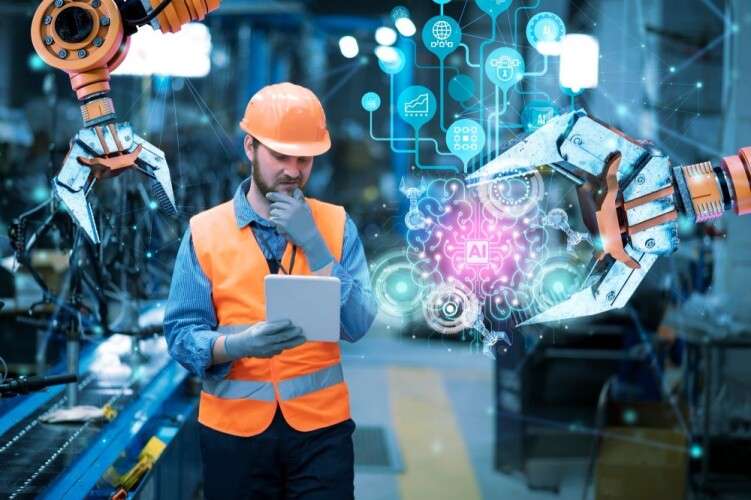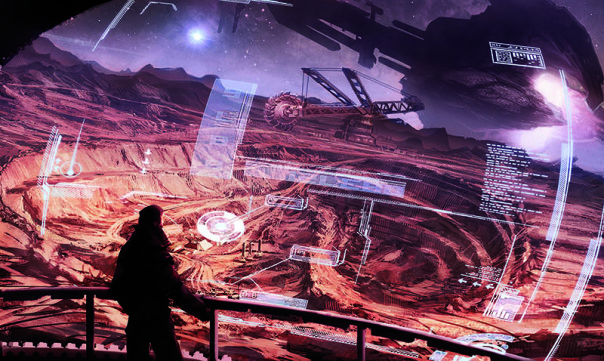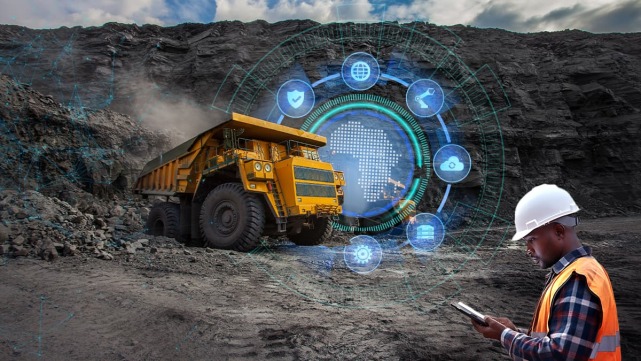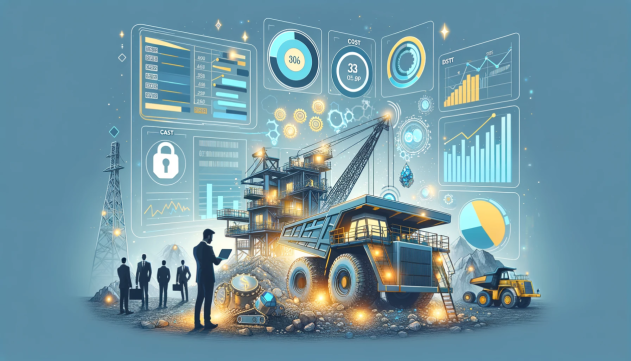The Role of AI and Automation in the Future of Mining

The mining industry is undergoing a significant transformation, propelled by the integration of Artificial Intelligence (AI) and automation. This transition marks a move from traditional, labor-intensive methods to a more technologically advanced approach. As we peer into the future of mining, it becomes increasingly evident that AI and automation will play a central role in driving innovation and sustainability in the industry. This article delves into the multifaceted impact of AI and automation on the future of mining, exploring their applications, benefits, challenges, and implications for the industry at large.
The Current Use of AI and Automation in Mining Industry
In the current landscape of the mining industry, Artificial Intelligence (AI) and automation have become integral components driving efficiency, safety, and sustainability. AI is being deployed in various aspects of mining operations, from exploration and resource identification to ore processing and machinery maintenance. Machine learning algorithms analyze vast datasets, including geological surveys and operational data, to identify prospective mining sites and optimize extraction processes. Automation technologies, such as autonomous vehicles and robotic systems, streamline operations by reducing the need for manual intervention and mitigating safety risks in hazardous environments. Additionally, predictive maintenance systems utilize AI to monitor equipment performance in real-time, enabling proactive maintenance and minimizing downtime. Overall, the widespread adoption of AI and automation is revolutionizing the mining industry, paving the way for increased productivity, reduced environmental impact, and enhanced worker safety.
The Future of AI and Automation in Mining Industry
As we look towards the future, it is clear that AI will play an increasingly pivotal role in the mining industry. The potential applications of AI are vast and varied, promising to revolutionize every aspect of the industry, from exploration and extraction to processing and safety measures.
The Role of AI and Automaton in Exploration and Extraction Process
unsupervised learning, harness historical data to predict mineralization likelihood and uncover hidden patterns in geological features.
Machine Learning (ML) Algorithms
In the future of mining, Artificial Intelligence (AI) and automation will play pivotal roles in both the exploration and extraction processes, revolutionizing the industry's efficiency, safety, and sustainability. AI-driven exploration techniques will enable mining companies to identify promising mineral deposits with unprecedented accuracy and speed.
Advanced Analyzing Algorithms
Advanced algorithms will analyze vast datasets, including geological maps, satellite imagery, and geological survey data, to pinpoint potential exploration targets more efficiently than traditional methods. These algorithms will detect subtle geological patterns and correlations, allowing geologists to prioritize exploration efforts and allocate resources effectively.
What Are Advanced Analyzing Algorithms?
Advanced analyzing algorithms, including machine learning, geostatistics, and spatial analysis techniques, revolutionize mineral exploration by efficiently processing vast geological datasets to pinpoint potential exploration targets.
Geostatistical techniques like kriging and indicator kriging generate high-resolution maps of geological attributes, aiding in target delineation.
Geostatistical Techniques
Spatial analysis methods, such as clustering and interpolation, identify spatial patterns and anomalies indicative of mineral deposits. Optimization algorithms like genetic algorithms and particle swarm optimization optimize target selection to maximize exploration success.
Spatial Analysis Techniques
Together, these algorithms leverage computational intelligence and statistical modeling to guide exploration efforts effectively and improve mineral discovery outcomes.


WE ARE KIMIA
Kimia Holding stands as a diversified conglomerate with a strong foothold in various sectors including mining and mineral resources, tourism services, livestock and poultry, agriculture, and foreign trade foreign trade in Iran and across the Middle East. However, it is within the realm of mining that Kimia Holding has truly distinguished itself, garnering recognition for its unwavering commitment to excellence and innovation.
CONTACT KIMIA
Our experts at Kimia Holding eagerly await your inquiries and are prepared to provide insightful answers or address any questions you may have. Should you require further details or wish to share your opinions, please don't hesitate to reach out. Your engagement is valuable to us.
Automation will complement AI-driven exploration by streamlining the extraction process, particularly in challenging or hazardous environments. Robotic systems and autonomous vehicles will be deployed for tasks such as drilling, blasting, and material transport, reducing the need for human intervention in potentially dangerous operations. These automated systems will enhance safety by minimizing the exposure of workers to hazardous conditions while also improving operational efficiency and productivity.
How Does Automation Complement AI-Driven Exploration?
What Are Robotic Systems and Autonomous Vehicles? How Can They Be Useful?
These systems encompass a wide range of technologies, from robotic arms and manipulators to remotely operated vehicles (ROVs) and drones. Robotic drilling systems can precisely execute drilling operations in challenging environments, such as underground mines or deep-sea exploration sites, where human access is limited or hazardous. These systems are equipped with sensors and cameras to navigate and interact with the environment autonomously, ensuring accurate and efficient drilling while minimizing safety risks to human workers. Similarly, robotic blasting systems can be deployed to handle explosives and perform controlled blasting operations with precision, enhancing safety and productivity in mining operations.
Robotic Systems
By deploying robotic systems and autonomous vehicles for drilling, blasting, and material transport tasks, mining companies can improve safety, productivity, and efficiency in their operations. These technologies enable remote operation and control, minimize human exposure to hazardous environments, and enhance precision and consistency in task execution. Moreover, the integration of robotics and autonomy into mining operations facilitates continuous operation 24/7, maximizing production uptime and overall operational performance.
Overall, the integration of AI and automation into the exploration and extraction processes of mining will lead to safer, more efficient, and more sustainable mining operations in the future. These technologies will enable mining companies to unlock new mineral resources, optimize operational processes, and minimize environmental impact, ensuring the long-term viability of the mining industry.
Implementing AI and automation in the mining industry presents several challenges that need to be addressed to maximize the technology's effectiveness and ensure successful integration:
What Are the Safety Measures of Using AI and Automation in Mining Process?
1. Data Quality and Availability: AI and automation systems rely heavily on data for training models and making decisions. However, mining operations may face challenges related to the quality, quantity, and availability of data. Data collected from sensors, equipment, and geological surveys must be accurate, reliable, and comprehensive to train AI models effectively.
2. Complexity of Mining Operations: Mining operations are inherently complex, involving various processes such as drilling, blasting, hauling, and processing. Developing AI and automation solutions that can effectively manage and optimize these complex operations requires sophisticated algorithms and integration across multiple systems.
3. Human-Machine Interaction: The introduction of AI and automation systems changes the dynamics of human-machine interaction in mining operations. Workers may need to adapt to new roles, responsibilities, and workflows, requiring training and change management efforts to ensure smooth transitions and minimize resistance to change.
4. Safety and Reliability: Safety is a paramount concern in mining, and AI and automation systems must be designed and implemented with safety in mind. Ensuring the reliability and robustness of AI algorithms, sensors, and automated equipment is crucial to prevent accidents, equipment failures, and production disruptions.
Cost and Return on Investment: While AI and automation have the potential to improve productivity, efficiency, and safety in mining operations, the upfront costs of implementing these technologies can be significant. Mining companies need to carefully evaluate the costs and benefits of AI and automation solutions to ensure a positive return on investment over the long term.
5. Workforce Skills and Training: The adoption of AI and automation may require up skilling or reskilling of the mining workforce to operate, maintain, and interact with new technologies effectively. Providing comprehensive training programs and opportunities for skills development is essential to maximize the potential of AI and automation in mining.
6. Cyber security Risks: With increased connectivity and data exchange in AI and automation systems, mining operations become more susceptible to cyber security threats such as data breaches, malware attacks, and system vulnerabilities. Implementing robust cyber security measures and protocols is crucial to safeguard sensitive information and ensure the integrity and reliability of AI and automation systems.
7. Environmental and Social Impacts: Mining operations have significant environmental and social impacts, and the introduction of AI and automation may exacerbate or mitigate these impacts. Mining companies need to consider the environmental and social implications of AI and automation technologies and implement measures to minimize negative effects on local communities, ecosystems, and natural resources.
Conclusion
In conclusion, the future of mining is intricately intertwined with the evolution of AI and automation technologies. These innovations offer unparalleled opportunities to enhance efficiency, safety, and sustainability in the industry. From exploration and extraction to processing and safety measures, AI and automation promise to revolutionize every aspect of mining operations
Resources
Autonomous Vehicles
Autonomous vehicles, including haul trucks, loaders, and drones, are equipped with advanced sensors, GPS navigation systems, and onboard computers to operate independently without direct human control.
In mining operations, autonomous haul trucks transport ore, waste, and other materials between excavation sites and processing facilities, optimizing logistics and reducing labor costs. Autonomous loaders and excavators can perform material handling tasks, such as loading trucks and stockpiling, with high efficiency and accuracy.

Written by Kimia Mines Company
A subsidiary of Kimia Holding, that began operations in 2018, focusing on mining exploration and exploitation within and outside Iran. The company specializes in producing iron concentrate, with a current capacity of 800,000 tons per year, supplying leading companies in the industry.
Kimia Mines Company aims to be a leading force in advancing the country's mining sector.





